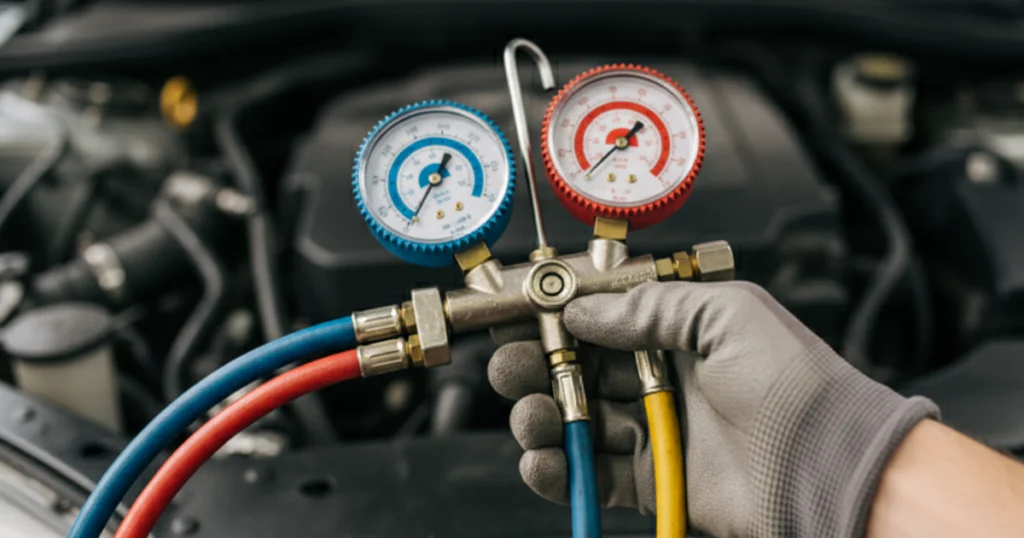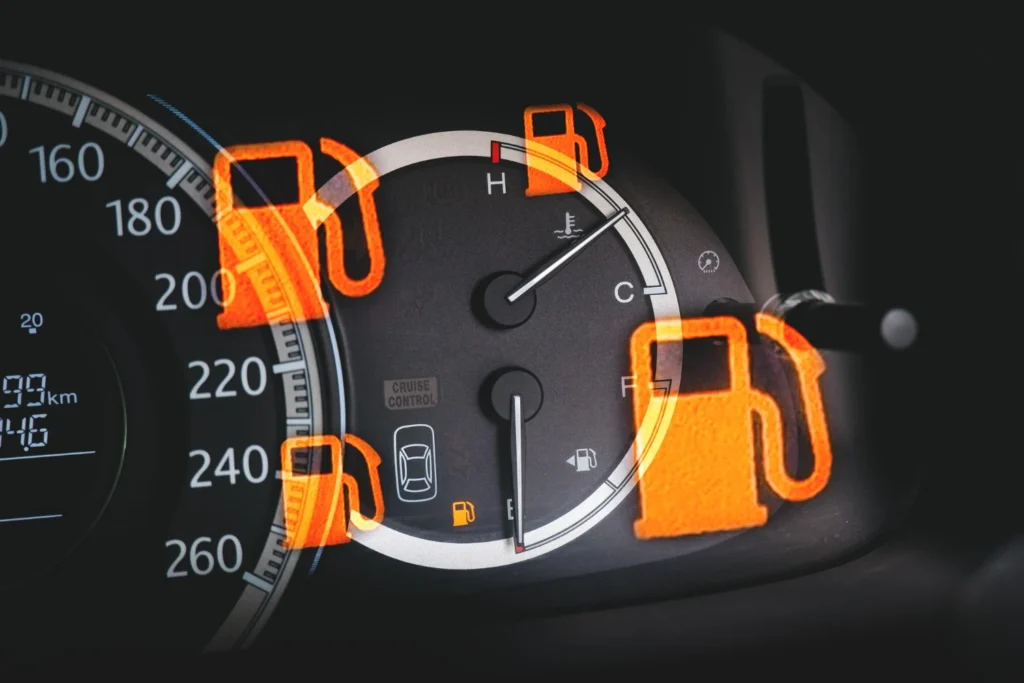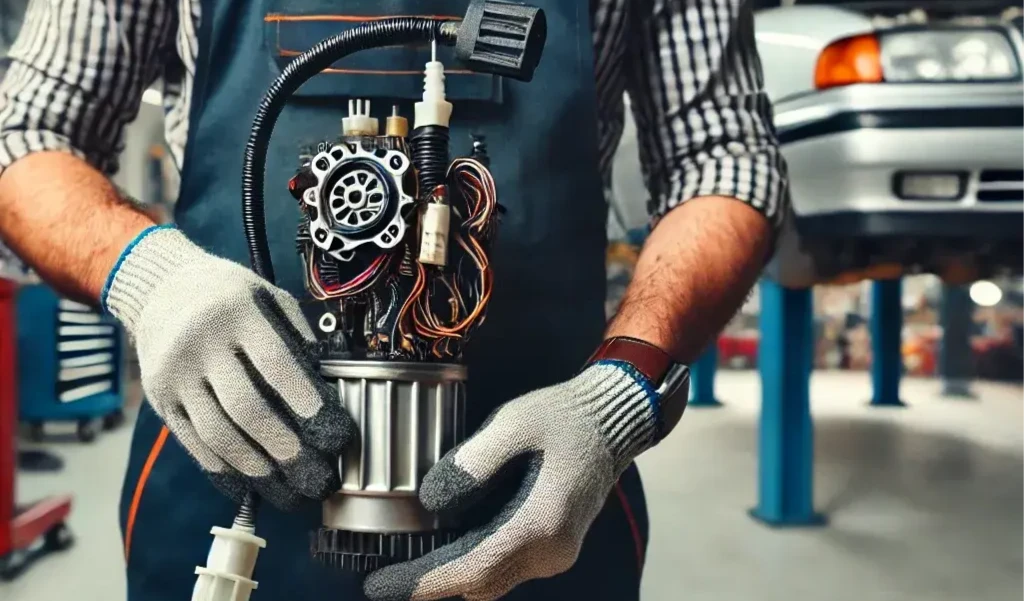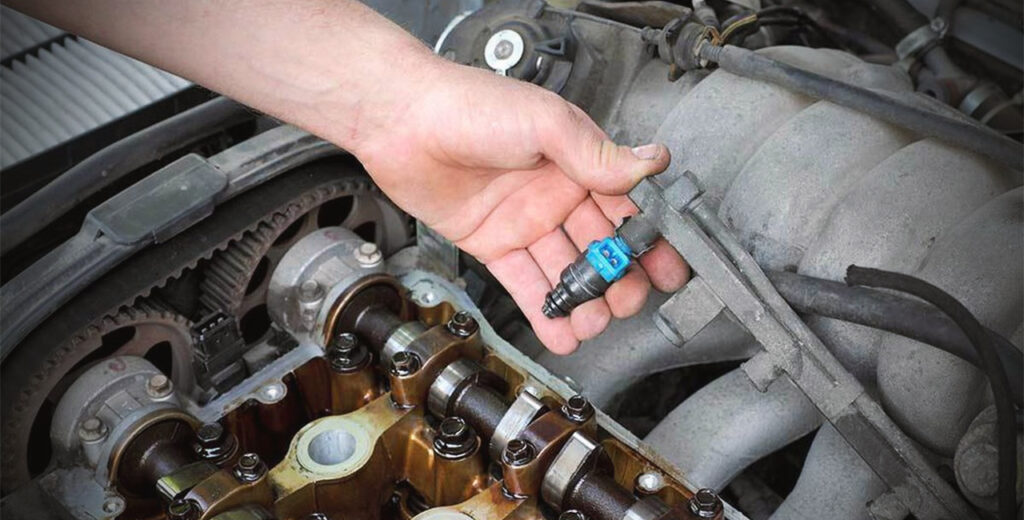Your car’s fuel pump plays a vital role in keeping your engine running smoothly. It moves fuel from the gas tank to the engine, maintaining the right pressure for proper combustion. When the pump starts to weaken, you may notice rough performance or even difficulty starting the car.
Since fuel pump issues can often resemble other problems, like a clogged filter or weak spark plugs, it’s important to test the pump before replacing it. Learning how to test for a bad fuel pump helps you identify the real issue instead of guessing. The good news is, you can safely test your fuel pump at home with the right tools and steps. But if you’d rather not deal with the hassle, our auto repair shop can take care of it for you.
Signs Your Fuel Pump May Be Failing
Before you dive into testing, it helps to know the common symptoms of a bad fuel pump. If your engine sputters at higher speeds, that’s often one of the first red flags. You might also notice your car struggling to start or taking longer than usual to fire up.
Another clear sign is a sudden loss of power when climbing a hill or carrying heavy loads. Some drivers also hear a whining or buzzing sound from the fuel tank. Poor gas mileage is another clue since a weak pump won’t deliver fuel as efficiently as it should.
Tools You’ll Need to Test a Fuel Pump
You don’t need a full shop to check your fuel pump. The main tool you’ll want is a fuel pressure gauge, which measures the pressure inside the fuel system. A multimeter is also handy for checking electrical connections and voltage.
If you have access to an OBD-II scanner, you can scan for error codes that may point to pump issues. For safety, keep gloves and protective glasses on hand. And if you’re doing a flow test, use a clean container to safely collect fuel.
Tools you’ll need:
- Fuel pressure gauge
- Multimeter
- OBD-II scanner
- Protective gloves
- Safety glasses
- Clean container
Safety Precautions Before Testing Your Fuel Pump
Fuel is highly flammable, so safety should always come first. Work in a well-ventilated area, preferably outdoors or in a garage with good airflow. Before disconnecting any lines, make sure you relieve the fuel system pressure to prevent sprays of fuel.
It’s also smart to keep a fire extinguisher nearby. Never smoke or use open flames while working on the fuel system. Taking a few minutes to prepare can prevent accidents and keep your test safe.
How to Test Fuel Pump the Right Way
Step 1 – Check for Fuel Pump Sounds
Start with the easiest test: listening. When you turn the key to the “ON” position (without starting the engine), listen near the gas tank. A healthy fuel pump will make a short humming or buzzing sound for a few seconds.
If you don’t hear anything at all, the pump may not be working. But keep in mind, silence can also mean a problem with the relay, fuse, or wiring.
Step 2 – Test Fuel Pump Fuse and Relay
The fuel pump relies on the relay and fuse to get power. A blown fuse or bad relay can stop the pump from running, even if the pump itself is fine. If you’re not sure how to test a fuel pump relay, use your car’s manual to locate it and check for continuity or power using a multimeter.
If the fuse is burnt or the relay is faulty, replace them and see if the pump starts working again. This quick check can save you the cost of replacing a good pump.
Step 3 – Perform a Fuel Pressure Test
Now it’s time for the fuel pressure gauge. Attach the gauge to the fuel rail, then turn the key to “ON.” Compare the reading to your vehicle’s normal fuel pressure range, which you can find in the manual.
Low pressure often points to a weak pump, though clogged filters can cause the same issue. If pressure is within the normal range, your pump is likely fine.
Step 4 – Test Fuel Pump Electrical Connections
Grab your multimeter and check the voltage at the fuel pump connector. You should see close to battery voltage when the pump is running. If you’re wondering how to test a fuel pump with a multimeter, this simple check will help you confirm whether the pump is getting proper power. If the reading is much lower, the pump may not be getting enough power.
Low voltage could mean damaged wires, corroded connectors, or other electrical issues. Fixing these may solve the problem without touching the pump itself.
Step 5 – Check Fuel Pump Flow Rate
The last test is a flow test. Disconnect the fuel line and let the pump push fuel into a clean container. Measure how much fuel comes out over a set time.
If the flow is weak or uneven, the pump may be worn out even if pressure looks okay. This test gives you a full picture of how well the pump is working.
Common Mistakes to Avoid When Testing Fuel Pumps
A common mistake is skipping the step of relieving fuel pressure first, which can make testing messy and unsafe. Another error is blaming the pump too quickly when low pressure is caused by a clogged filter instead.
Some drivers replace the pump without checking the relay or fuse first. Others overlook wiring problems that mimic pump failure. Taking the time to rule out these issues saves money and frustration.
When to Replace vs. Repair a Fuel Pump
Not every fuel pump problem means you need a brand-new unit. If the issue is a faulty relay, fuse, or wiring, repair may be enough. A clogged fuel filter can also make the pump seem bad when it isn’t.
But if the pump motor has completely failed or the internal parts are badly worn, replacement is the only option. Consistently low pressure or flow, even after fixing other issues, usually means it’s time for a new pump.
In terms of cost, minor repairs are usually much cheaper than replacement. A full fuel pump replacement can run several hundred dollars, depending on your car. Knowing the difference helps you make a smart choice.
Professional Fuel Pump Diagnosis and Repair
Testing your fuel pump the right way can save time, money, and stress. By checking sounds, pressure, flow, and electrical connections, you’ll know whether the pump itself is the issue or if something else is at play.
While DIY testing is helpful, nothing beats a professional diagnosis when the results aren’t clear. Need professional fuel pump testing or replacement? Visit Eric’s Car Care today or call us at 713-352-8058, and let our team get your car running like new




